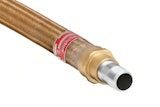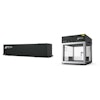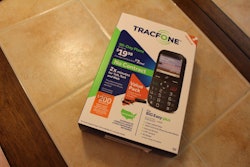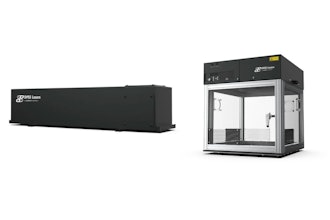The disappearance of two shipments of Wisconsin cheese worth a combined $160,000 made national headlines as “the lighter side of news” near the end of January. In reality, this story is anything but funny for people in the food industry. Even though both shipments of cheese were eventually recovered intact, the story doesn’t really have a happy ending either. Because the cheese was stolen and the security seals were broken in the heists, none of the cheese is lawful for sale. That stinks.
Cargo theft is a major concern
While it might be funny to tell a story about a parmesan perp in the Dairy State, it only helps illustrate part of a growing problem in the U.S. — cargo theft. No longer just an opportunistic crime, cargo theft has become an organized criminal activity that is estimated to be a $30 billion problem in the United States, according to the FBI. Food facility managers shouldn’t think that the large quantities of stolen cheese are isolated incidents, either. According to CargoNet, food isn’t just being stolen; food is being stolen at the highest rate of any product category in the U.S. The report indicates that 28 percent of all thefts involve food and beverage products with the next largest categories of stolen products being electronics and household, each at 13 percent.
On top of that, nearly a quarter of all cargo thefts occur at distribution centers and warehouse yards, according to CargoNet. Fortunately for food facility managers there are automated loading dock solutions that not only help protect the integrity of the food that passes through their doors, but also help prevent those products from being stolen or tampered with – this goes for all types of cargo.
Automatic vehicle restraints: securing the supply chain and protecting workers
Automated restraints not only enhance employee safety by ensuring the trailer can’t be mistakenly pulled away when a forklift is still inside, they also help prevent cargo theft. An automatic restraint wraps around a trailer’s rear-impact guard (RIG) or rear wheels, securing the trailer to the loading dock. Some automatic restraints feature a control panel that can be integrated into building management or security systems, providing another level of security and protection against external tampering. The most advanced restraints will actually re-fire if there is tampering or the trailer attempts to pull away when in the locked position.
The most advanced automatic vehicle restraints offer a vertical engagement range of 9 to 30 inches. Some models can even help secure intermodal overseas container chassis, which have become increasingly common across the food industry supply chain and will only increase due to the impending full re-opening of the Panama Canal this May.
Bridging the gap from dock to trailer
Once a trailer is secured at the loading dock, the next step is linking the gap between the loading dock floor and the trailer bed. A vertical-storing dock leveler is considered the gold standard for maintaining cold chain integrity, environmental control and security. This is because security seals and trailer doors can be opened and closed inside the loading dock (“drive-thru” application) instead of on the drive approach, which improves cold chain integrity and enhances the security of products and processes.
Unlike a pit-style leveler, a vertical leveler (when in the stored position) allows the loading dock door to close directly on the pit floor – rather than the leveler itself – reducing energy loss by minimizing outside air infiltration. The vertical design makes it easy to clean or wash down the pit floor when the leveler is in the upright and stored position.
Properly sealing the dock perimeter
A dock seal or shelter creates an environmental barrier between the back end of the semi-trailer and the inside of the loading dock. This connection helps companies control their environment by keeping wind, rain, dust, bugs, and other contaminants outside the building, while preventing the escape of valuable energy from inside the building.
Some of the newest dock shelters have been specifically designed with the food industry in mind. In particular, some shelter designs complement the vertical storing dock leveler, allowing the trailer doors to be opened inside the building for security purposes (part of the drive-thru application). Special design features ensure tight sealing against trailer sides, across the full width of the trailer top and at the corners, without interfering with trailer doors being opened and closed after the trailer has been parked at the dock.
An effective dock sealing system also helps prevent weather-related product damage and contamination, protecting and securing the integrity of products as they move in and out of a facility during manufacturing, processing, and shipping. Seals and shelters can also provide deterrence against theft at the loading dock by sealing gaps that could otherwise be passageways for thieves to move product.
Automating the dock and protecting the food supply chain
A systematic approach that incorporates automatic vehicle restraints, vertical dock levelers and appropriate seals/shelters is the best way to safely secure a loading dock. Working together as a true system, these products enhance security, protect employees, reduce contamination and improve environmental conditions within a building and throughout a given supply chain. When thinking of ways to avoid being the next cheese theft victim, facility managers should start at the loading dock and consider upgrades to dock equipment.
The information provided herein is provided as a general reference regarding the use of the applicable products in a specific application. This information is provided without warranty. It is your responsibility to ensure that you are using all mentioned products properly in your specific application and in accordance with all laws and regulations.























